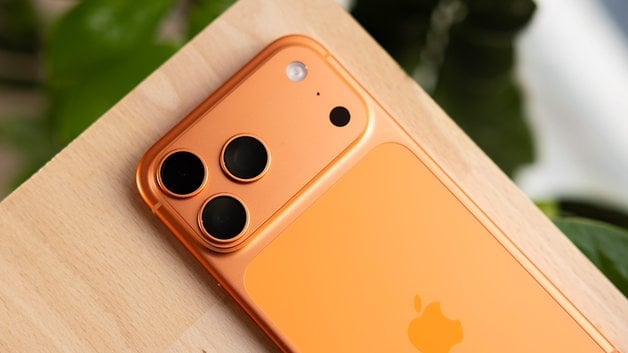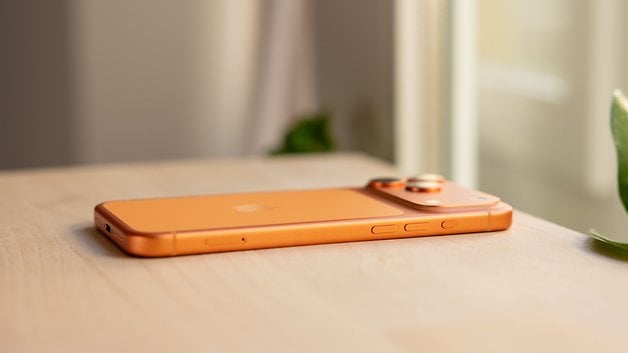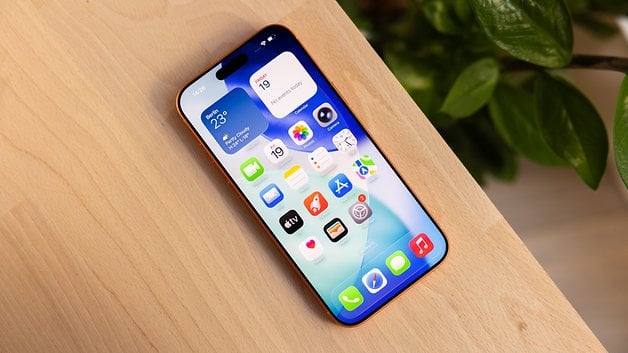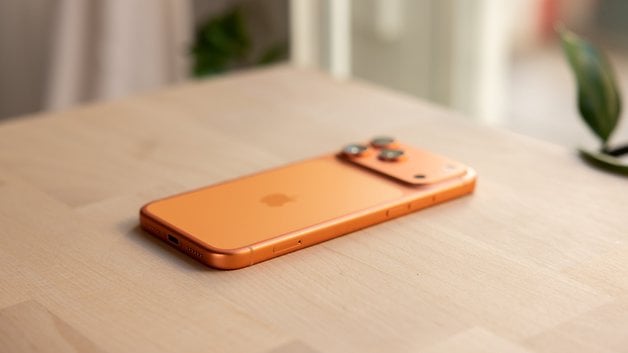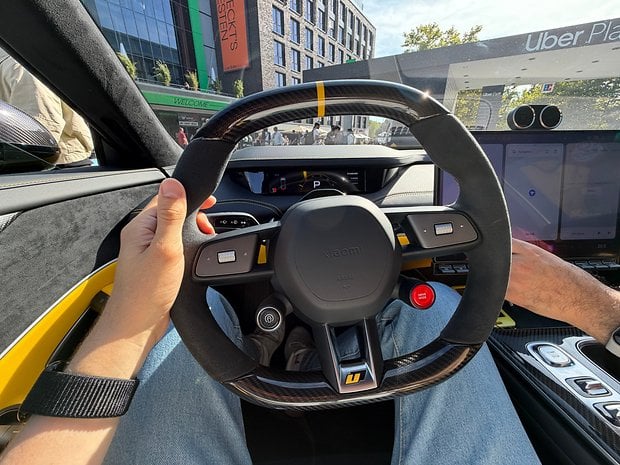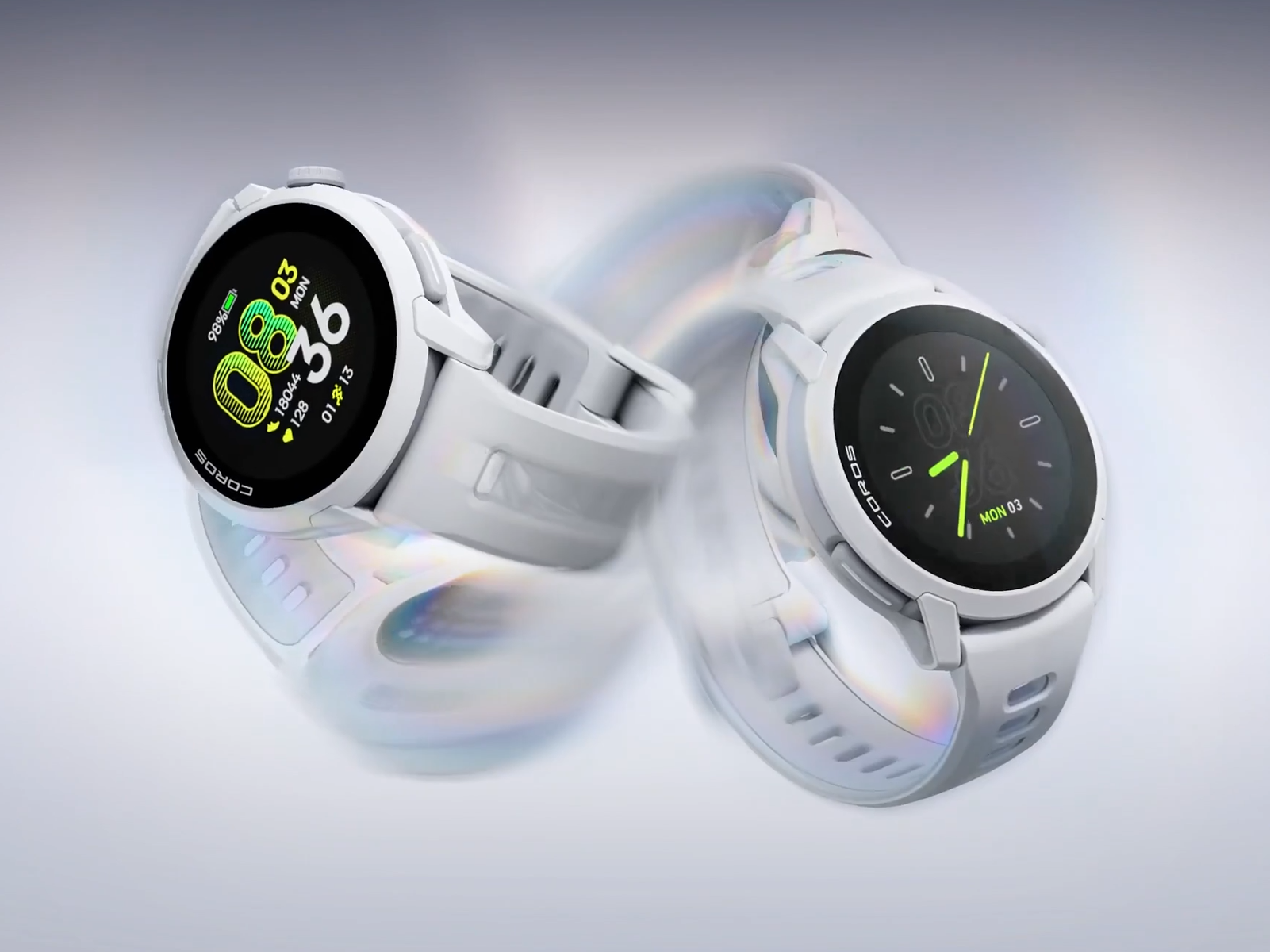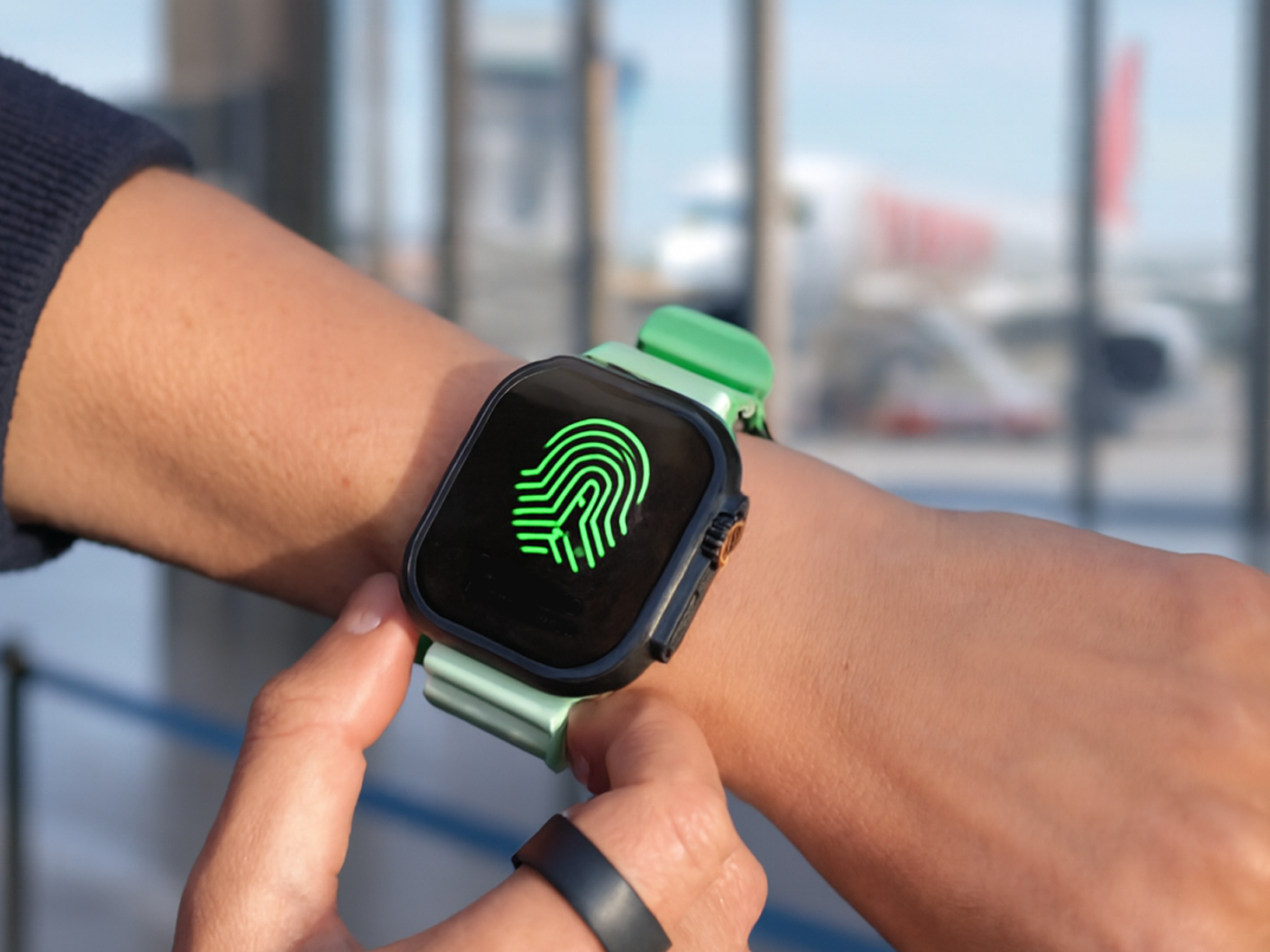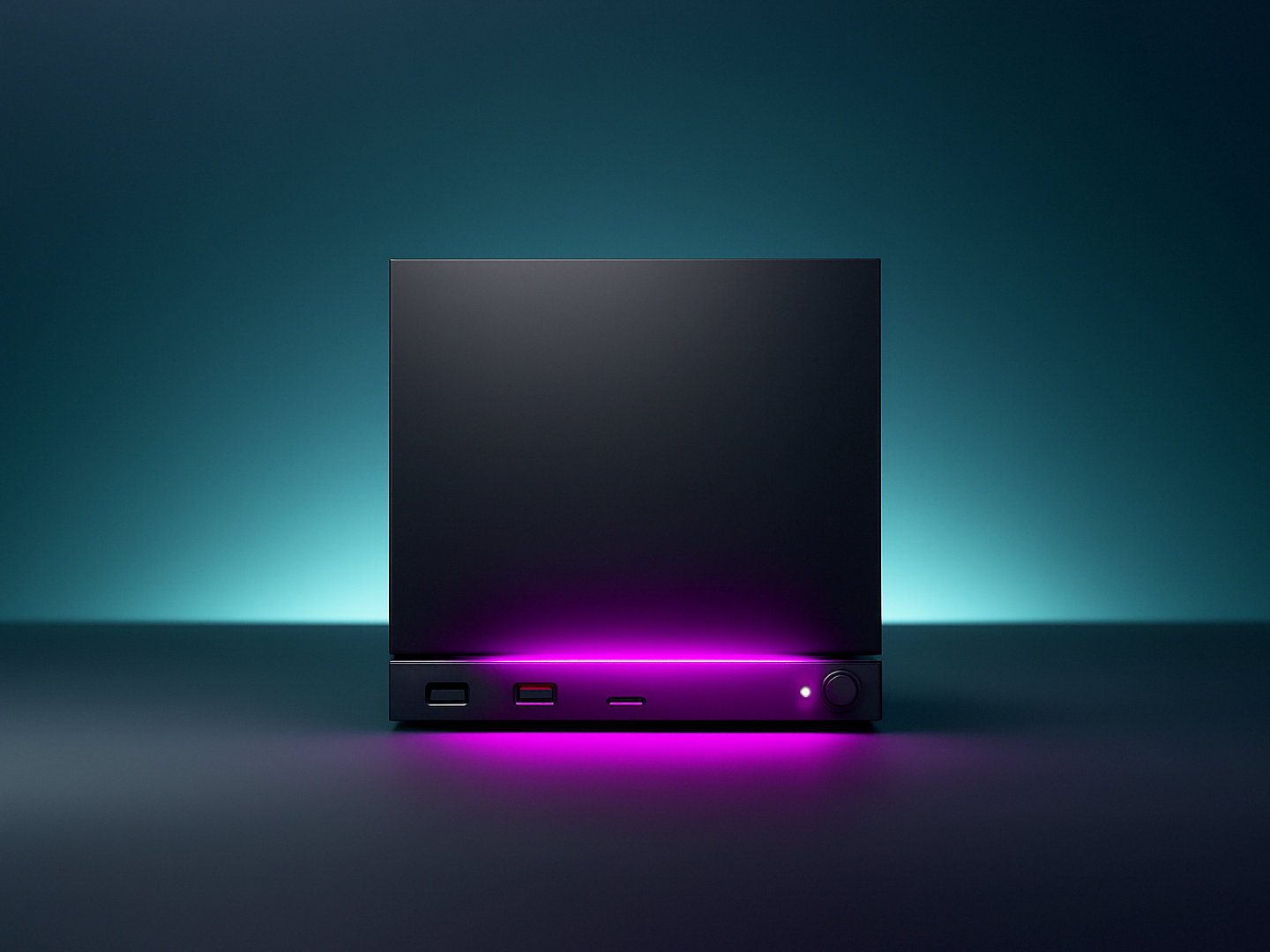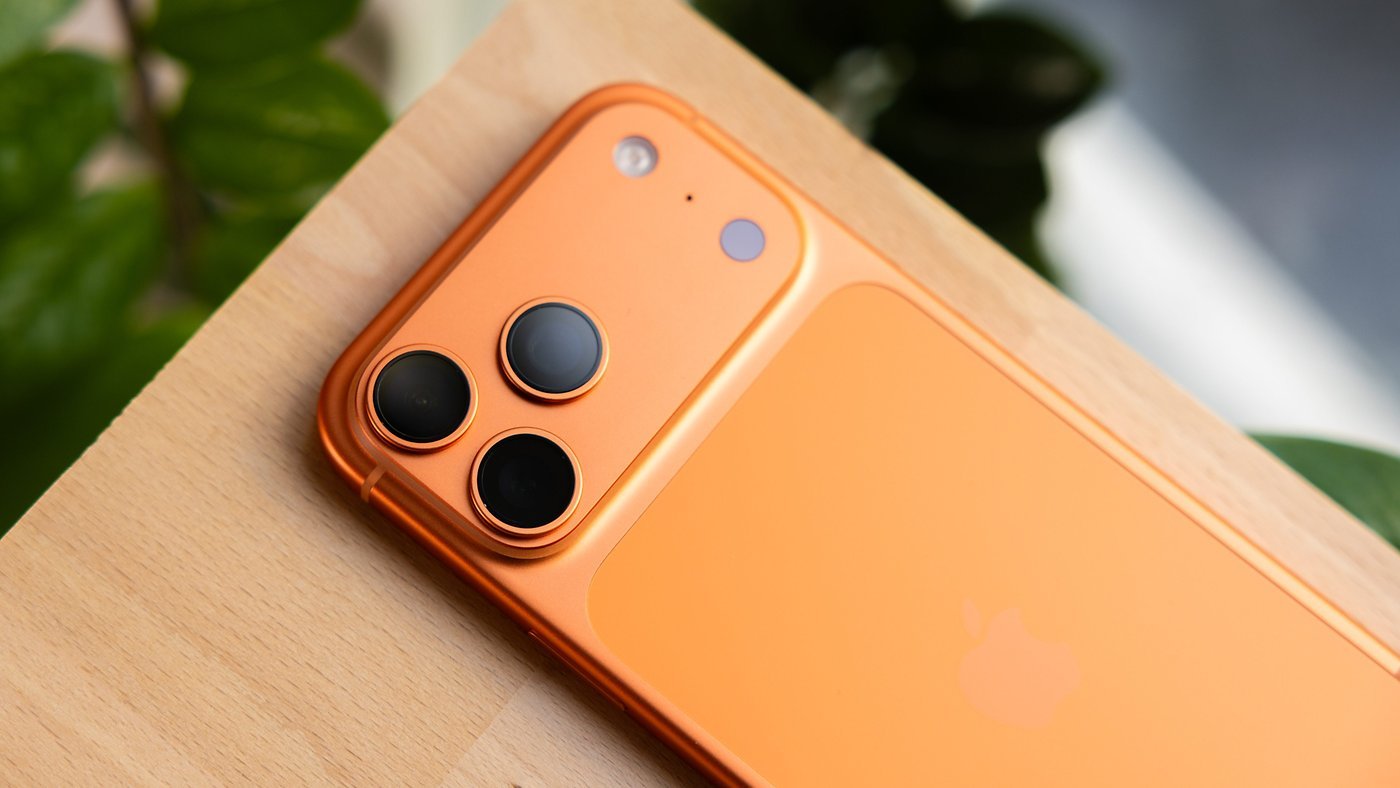
The exterior design of Apple’s smartphones has hardly changed since the iPhone 12 rolled out. Both the front and back are made of glass, framed in an angular manner. Apple initially relied on stainless steel before switching to titanium with the iPhone 15 Pro. After five years without any major visual changes, the current generation is due for a comprehensive redesign. This should not only ensure a more modern appearance but also solve a seemingly perennial problem that has plagued users.
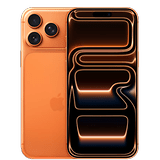
Apple iPhone 17 Pro Max: All deals
Apple iPhone 17 Pro Max design and build quality
| Design and dimensions | |
|---|---|
| Display |
|
| Dimensions and weight |
|
| Durability |
Apple hails the new unibody design of the iPhone 17 Pro and uses aluminum instead of titanium. With the unibody design, both frame and back are made from a single block of aluminum. This design is familiar to those who use MacBooks and has long since established itself as the standard in the premium segment. The move back to aluminum was not just a design decision, but primarily intended to solve a technical problem that has plagued many users in recent years—heat build-up.
In the previous models, a high processor load often caused the device to heat up considerably. As a result, the display dimmed automatically to regulate the temperature. This severely restricted use, especially when one is under direct sunlight. Titanium as a material did not sufficiently dissipate heat, so the devices quickly reached their performance limits.
Aluminum offers clear advantages here. It conducts heat much more efficiently and is also supported by vapor-chamber cooling in the iPhone 17 Pro. This ensures that any heat generated is dissipated directly to the case and to the surrounding environment.
Our review clearly showed the effect in action: while the iPhone 16 Pro visibly dimmed after just a few minutes of intensive use, such as when recording videos or playing Pokémon Go in the sun, the iPhone 17 Pro remained stable even under high loads. Only after several hours of continuous use in sweltering summer temperatures did the display darken slightly and only for a moment. Apple has thus made noticeable strides with a problem that affects not only its own devices, but also many of its competitors.
Size and Color Selection
As with its predecessors, the iPhone 17 Pro is also available in two versions. The standard model has a 6.3-inch display, making it one of the most compact high-end smartphones on the market. For users who prefer a larger display, the iPhone 17 Pro Max offers a screen measuring 6.9 inches across diagonally. Apart from the display and battery size, both models are technically identical, so the choice depends primarily on personal preference when it comes to size and handling.
Apple offers the iPhone 17 Pro in three color variants: Orange, dark blue, and silver. The orange model catches the eye immediately with its eye-popping design and clearly stands out from previous iPhone colors. Dark blue is the darkest option, as Apple is doing away with classic black for the first time this year. Silver, on the other hand, shows the aluminum in its original form and should prove to be particularly resistant to scratches in everyday use. Thanks to the matte surface of the new aluminum chassis, fingerprints are barely visible on all color variants.
Apple iPhone 17 Pro Max display
With the iPhone 17 Pro, Apple can extend its pioneering role in displays. Its strengths are particularly evident in the software. The OLED panel impressed with a very high degree of brightness, precise color reproduction, high contrast, and comprehensive HDR support. Although these features are now standard in smartphones that cost north of $1,000, the iPhone 17 Pro is still one of the best devices on the market.
The reliable automatic brightness control and color temperature remain a unique selling point. True Tone technology dynamically adjusts the display according to the ambient light, ensuring a particularly natural look. When playing back photos or videos, this effect is deactivated to ensure an unadulterated display. In everyday use, the display proves to be extremely convenient: manual readjustment of the brightness is hardly necessary, and even accidental inputs at the bezels are filtered out reliably. These software-side optimizations enable Apple to set itself apart from the competition—even if many manufacturers source their panels from the same supplier.
Apple iPhone 17 Pro Max software
The iPhone 17 Pro comes with iOS 26 right out of the box, which features the biggest visual overhaul in more than a decade. The so-called “Liquid Glass Design” gives the user interface a more modern appearance and ensures a fresher overall user experience. Although there are still a few places where Apple and third-party providers need to adapt their apps, the new interface looks consistent and contemporary.
The lengthy update support remains a decisive advantage to pick up this handset. Normally, Apple makes new iOS versions available for all supported models simultaneously and provides its devices with security and function updates for many years. Although there is no official guarantee, new operating system updates have been available for at least 6 years or longer for over a decade. This continues to set the company apart from many of its competitors, where updates are often delayed or only released for selected, newer models.
The choice between iOS and Android ultimately remains a question of personal preference. Both mobile operating systems have their strengths and weaknesses, and not every app is available on both platforms. Objectively speaking, iOS offers some clear advantages: The quality of many apps is higher than what Android offers, backups of the entire system are straightforward to create, and switching to a new device is usually a smooth process—including apps, data, and settings.
Blazing Fast Performance
| Performance | |
|---|---|
| Processor | |
| Memory |
|
| Connectivity |
|
The iPhone 17 Pro is powered by the new A19 Pro chip. In synthetic benchmarks, it achieved values that clearly outperform the previous generation, while heat development remained controlled thanks to an updated cooling design. In everyday use, this was reflected in smooth multitasking, short loading times, and stable performance, even with computationally intensive applications such as 3D games or video editing. Hence, there is nothing to complain about in terms of performance, and the A19 Pro offers enough performance reserves for the coming years.
With a SIM slot and Better Reception
Apple is pursuing a two-pronged strategy for SIM cards with the iPhone 17 Pro: while the device will continue to be delivered with a classic nano-SIM slot in selected countries, Cupertino is relying exclusively on eSIMs in some markets. The physical SIM slot makes it easier to quickly switch between devices, for instance, when switching to a new smartphone or when using a local SIM card abroad. The model without a SIM slot, on the other hand, uses the freed-up space for a larger battery, which, according to Apple, enables a battery life that is approximately five percent longer.
The eye-catching camera bump at the back is not only used to accommodate the camera modules. Apple also integrated an additional antenna around the module to improve cellular reception. The manufacturer has not officially communicated this new feature, but practical tests have shown a noticeable difference: in areas with a weak Wi-Fi signal, the iPhone 17 Pro remained connected, while its predecessor dropped the connection or was no longer able to load websites reliably. The new antenna solution, therefore, contributed to an overall more robust connectivity.
Apple iPhone 17 Pro Max camera
| Camera | |
|---|---|
| Main camera | |
| Ultra wide-angle camera | |
| Telephoto camera(s) |
|
| Selfie camera | |
| Max. Video resolution |
The iPhone 17 Pro is the first smartphone from Apple to be equipped with three 48-megapixel sensors: The main camera, ultra wide-angle, and telephoto lens all offer the same resolution. The telephoto camera thus received a long-awaited upgrade after all this time. In a direct comparison with the previous models, the differences are stark.
While the iPhone 15 Pro (review) and iPhone 16 Pro (review) still had 5x optical zoom at 12 megapixels, the iPhone 17 Pro now offers 48 megapixels, albeit at 4x optical zoom. To enable higher zoom levels, Apple relied on so-called sensor cropping. This means that only part of the sensor is used so that an 8x zoom can be achieved at a 12-megapixel resolution. This technology has already been used in the main camera, which can take photos at 2x zoom at reduced resolution if desired.
In everyday use, the new solution proved to be particularly impressive in daylight. Even at 8x zoom, detailed and sharp images are possible. For the very first time, digital zoom can be increased up to 40x, although the image quality will be naturally reduced by quite a margin. There is a loss of quality in night shots with the 8x zoom, but results with the 4x zoom were clearly better than the 5x zoom shots taken by its predecessors.
The main camera continues to deliver realistic colors, a high level of detail, and clear contrasts. There are improvements, especially in low-light situations: image noise has been reduced compared to previous models, but there are no major changes.
The front camera is a real game-changer. Apple uses a square sensor for the very first time. This is an approach that will most likely be adopted by other manufacturers in the coming years. The advantage of doing so? The device no longer needs to be rotated to take photos in portrait or landscape format. The new sensor also noticeably improves image quality, especially in poor lighting conditions. The wider-angle lens also allows more people to be crammed into a selfie.
Apple iPhone 17 Pro Max battery
| Battery capacity | |
|---|---|
| Battery capacity |
|
| Charging speed (via cable) | |
| Charging speed (wireless) |
With the revised case design, Apple has not only changed the external appearance but also reorganized the inner workings. Numerous components have been relocated to the enlarged camera plateau, creating additional space for a larger battery in the lower section of the case. The result is a significantly improved battery life: even the more compact iPhone 17 Pro surpasses the endurance of the iPhone 16 Pro Max, while the iPhone 17 Pro Max offers the longest battery life in an iPhone to date.
Faster Charging up to 40 Watts
In addition to the increased capacity, Apple also increased the charging speed. For the first time, the iPhone 17 Pro supports wired charging of up to 40 watts. According to the manufacturer, this translates to approximately 50 percent of the battery charged in 20 minutes. This information was confirmed in tests: after spending 30 minutes on the cable, around 65% of the battery capacity was restored, while a full charge took around 70 minutes.
As with previous models, wireless charging with Qi2, including magnets, is on board. Apple developed this technology back then and has been using it for many years. Although only a few manufacturers use the standard to date, the technology has proved to be practical in everyday life. Charging pads cannot slip, and magnetically attached power banks supply the device with energy on the go without the need for a cable to be connected.
Final verdict
With the iPhone 17 Pro, Apple presents the most comprehensive further development in recent years. The change from a titanium to an aluminum unibody case not only introduced a new design but also solved the long-standing heat problem of previous generations. Despite the reduced color options, the device impressed in everyday use with its choice of materials, good handling, and improved heat dissipation.
The iPhone 17 Pro is still available in two sizes, with both variants featuring identical technical specifications. In combination with the high performance, significantly improved cameras, and the best battery life in an iPhone to date, the device positions itself as a reliable companion—even for demanding and professional usage scenarios.
The overall package is capped by a first-class display, powerful speakers, proven and secure unlocking via Face ID, and the flexible Action button. With the iPhone 17 Pro, Apple has set new standards within its own model range, offering a smartphone that impresses in almost all segments.

